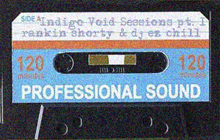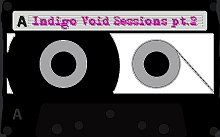
A-108 6/12/24/48dB Low Pass Filter a pimped Moog-ladder design
A-105 24dB SSM Low Pass Filter based on the SSM2044 filter chip
A-101-1 Vactrol multitype input filter based on a design by Nyle Steiner (12dB / out 2)
A-102 Diode Low Pass a reproduction of 'a legendary low pass filter design' (24dB)
A-106-1 Xtreme Lowpass/Highpass Filter a pimped Korg MS20 filter
A-122 24dB Low Pass 2 based on the CEM 3320 chip made by Curtis Electromusic Specialties
A-124 Wasp filter based on the EDP Wasp filter made originally by Electronic Dream Plant (12dB multimode)
A-103 18dB Low Pass a reproduction of the Roland TB-303 filter
Arp 4075 filter (bandwidth mod) from an Arp Axxe as a non-Doepfer reference
Dry signal
Signal path
A-111/A-118 -> filter -> Focusrite Trakmaster Pro preamp -> MOTU 828MKII interface (24 bit 44.1 kHz) -> in Cubase the infrasound was removed from all tracks to protect your speakers -> mono wav (24 bit, 44 kHz, 38Mb) or mp3 (128, 4,7Mb)
Parts
Each track has 10 different parts. Peak levels for all parts/filters are roughly matched at the preamp except the last part where the level was fixed to illustrate level differences. The filters were tuned, modulation was synchronized with all cv inputs at 100% and level and resonance settings were the same for all filters (with a few exceptions, see notes)
These are the different parts
1. saw / input level 50% / resonance 'medium'
2. square / input level 50% / resonance 'medium'
3. saw / input level 100% / variable resonance 0-100%
4. sine / input level 100% / resonance 100%
5. sine / input level 100% / resonance 50% / extreme modulation
6. pwm square / input level 50% / resonance
7. lin fm sine / input level 50% / resonance 50%
8. white noise / input level 50% / resonance 75%
9. self oscillating / resonance 100%
10. pwm square + noise / input level 25% / resonance 0-100%
Notes: in part 1 and 2 resonance was set to a subjective 'medium' setting and the sweep range was adjusted for a 'standard' sound. In part 5 the A-101-1 cv input was set to 75% to get modulation. In part 6 the sweep range was adjusted for each filter. In part 7 the A-102 was set to 25% resonance. In part 9 the A-103 was set 2 octaves higher to produce self oscillation.
What this shootout is for
These samples may help you decide what Doepfer filter you prefer if you can't try them in a music store. You get the most from them if you load 2 or more tracks in a sequencer/multitrack program for A/B comparing.
What it's not for
This is not a 'which one is the best filter' contest. First of all there are many more (Doepfer) filters but I could also have included a Sherman filterbank, a Roland filter or even the humble Boss FT2 Dynamic Filter stompbox but you have to draw the line somewhere.
Also this is not about emulating trademark sounds of classic synths. For example no VCA's were used to create the samples. And even if a Doepfer module is an exact reproduction of a classic filter or built around a 3rd party chip that was also used in a classic synth that doesn't mean that the Doepfer module and that classic synth will sound the same because obviously a synth is more than just a filter.
This shootout is not even a good showcase of what the modules/filters can do. A few of them are multimode filters but you will only hear lowpass sounds. And almost every filter has a few extra tricks, which are not showcased here. Just look at the Xtreme filter.
Finally this is not a Doepfer filter beauty contest. The idea was to synchronize the modulation and standardize the settings as much as possible to enable some sort of A/B comparing. But the problem is that this approach is not musical. Sweet spots are sometimes barely touched or even missed.
The drum beat (98 BPM) was added as a constant reference. Also this way you won't turn up the volume during a soft or silent part and blow up your speakers a few seconds later.
Conclusions
If you are new to modular equipment and you don't know what to make of this mess it might help to think of these filters in three categories: classic filters (Arp 4075, A-108, A-105), vanilla filters (A-122, A-124, A-103) and extreme filters (A-106-1, A-101-1, A-102).
If you want just one filter and don't know which one to choose i would have no problem recommending the Wasp filter. It's multimode and versatile although it doesn't have self oscillation. If you want a certain sound you're just gonna have to trust your ears. If you want lots of features the A-106-1 and the A-108 are good choices.
Finally i personally think that in a modular setup you can't really reject a certain filter because it is 'overused'. If you listen to part 1 and 2 you may instantly recognize certain sounds but that's mainly because the dry signal and the modulation type are also 'overused' or maybe 'basic' is a better word. Listen to part 4 or 7 and the instant recognition is gone. Add some heavy modulation like in part 5 and even the 'vanilla' Curtis filter does the weirdest things. All these circuits produce different but highly usable and even classic sounds. They work in different ways and at very different output levels. You can't appreciate their quality by just listening to these samples because there are many hidden surprises in each one of them. At the end of the day none of these filters need promotion.

Similar products
I don't want this to look like Herr Doepfer is paying me so below is a list of similar products, both old and new. Please note that I may have overlooked quite a few.
A-108: Moogerfooger MF101, Analogue Systems RS100, Analogue Solutions SY03, Modcan 14A
A-102: Analogue Systems RS430, Modcan 23A
A-103: Analogue Solutions TBX-303
A-101-1: Plan B Frequensteiner
A-106-1: Frostwave Resonator, Analogue Solutions SY02, Filtered Coffee
A-124: Cynthia Twin Wasp
Arp 4075: Modcan 36A
The CEM 3320 4-pole voltage controlled filter chip from Curtis ElectroMusic Specialities was used in the CMI Fairlight II (earlier versions), Crumar Trilogy, Elka Synthex, Linndrum, Oberheim OB-8, Oberheim OB-SX, Oberheim OB-Xa, PAiA Proteus, PPG Wave 2.0, Sequential Circuits Prophet-5 rev.3, Sequential Circuits Prophet-10, Sequential Circuits Pro-One.
The SSM 2044 4-pole voltage controlled filter chip from Solid State Micro Technology for Music, Inc. was used in the Banana Poly Synth, CMI Fairlight II, Crumar Bit 01 (late models), Crumar Bit 99, Crumar Bit One, Emu SP-1200, Korg Mono/Poly, Korg PolySix, PPG Wave 2.2 and 2.3, Siel DK600, Siel Opera 6.
More synthchip info here or here
















